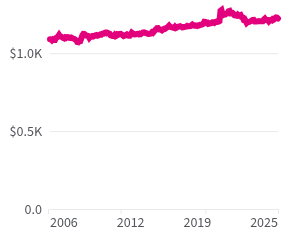Are wages keeping up with inflation?
Updated monthly
Yes. From July 2024 to July 2025, wages grew 1.5 percentage points faster than inflation. Nominal wages — the literal dollars earned regardless of cost of living — increased by 4.2% while inflation stood at 2.7%. When wage growth outpaces inflation, it indicates that workers are experiencing an increase in purchasing power from the previous year.
Jul 2024 to Jul 2025
4.2%
Nominal average weekly wage growth
Jul 2024 to Jul 2025
2.7%
Inflation rate
The Bureau of Labor Statistics has published average weekly wage data for more than 19 years, since March 2006. Looking back, average wages outpaced inflation 71.9% of the time. Most recently, wage growth was faster than inflation in every month since February 2024.
Between Jul 2024 to Jul 2025, average weekly wages grew faster than inflation.
Difference in year-over-year change of average weekly earnings and CPI
A number of factors influence the nominal wage growth and inflation rates, including labor costs and the labor market itself. In May 2020, wages increased 7.6% over the previous year while inflation was at 0.2%, a record-high gap of 7.4 percentage points. This spike was attributed to pandemic labor market disruptions that disproportionately affected lower-wage jobs.
The biggest negative gap (4.3 percentage points) was in June 2022, when nominal wages grew by 4.8% year over year while inflation hit 9.1%.
In July 2025, average weekly wages grew 4.2% compared with an inflation rate of 2.7%
Year-over-year change of average weekly earnings and CPI
We can measure the effect of inflation on wage growth by comparing the nominal average weekly wage to its inflation-adjusted (or “real” wage) equivalent. Since March 2006, the nominal average wage rose from $686 to $1,250, an 82.3% increase. Once adjusted to July 2025 dollars, it went from $1,109 to $1,250, a 12.7% increase. The nominal wage growth was $564, but the real wage growth was $141.
Wages
In August 2025, the average weekly wage was $1.11K.
Source: Bureau of Labor Statistics

Between July 2024 and July 2025, the nominal average wage grew from $1,199 to $1,250 — $50 more a week, a growth rate of 4.2%. Accounting for inflation, the real wage growth was 1.5% or an additional $18 a week.
Since March 2006, the nominal average wage grew by $564 per week. Adjusted for inflation, that's $141.
Average weekly wage, nominal and inflation-adjusted
Between July 2024 and June 2025, the nominal average wage grew from $1,200 to $1,250 — $50 more a week, a growth rate of 4.2%. Accounting for inflation, the real wage growth was 2.5% or an additional $30 a week.
Real wages increased in 42 states and Washington, DC.
Average weekly wage growth (Monthly average from Jul 2024 - Jun 2025)
Keep exploring
Methodology
USAFacts standardizes data, in areas such as time and demographics, to make it easier to understand and compare.
The analysis was generated with the help of AI and reviewed by USAFacts for accuracy.
Page sources
USAFacts endeavors to share the most up-to-date information available. We sourced the data on this page directly from government agencies; however, the intervals at which agencies publish updated data vary.
